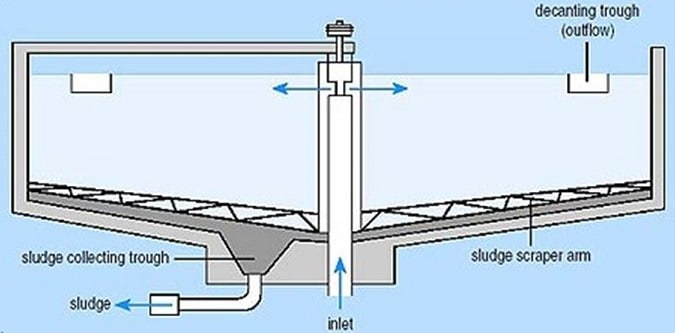 Налоговый юрист как ключ к успешному бизнесу
Налоговый юрист как ключ к успешному бизнесу
 Кредит под залог машины: риски для клиента
Кредит под залог машины: риски для клиента
 Склады: что это, и способы применения
Склады: что это, и способы применения
 СЭД - система электронного документооборота: плюсы, минусы и как выбрать идеальное решение
СЭД - система электронного документооборота: плюсы, минусы и как выбрать идеальное решение


→ Types of tanks used in sedimentation process
Types of tanks used in sedimentation process

There are 6 types of tanks used in sedimentation process:
- Horizontal flow tanks
- Radial flow tanks
- Inclined settling
- Ballasted sedimentation
- Floc blanket sedimentation
- Sirofloc Process
Type 1: Horizontal Flow tanks – The simplest way to perform the sedimentation process is to fill a tank with untreated water and leave it for a long time so that the solid particles present in the water get enough time to get settled down at the bottom, and then one can easily collect the clear water (without the solid particles) from the upper part of the tank without disturbing the sediments present at the bottom. But in reality, this way of sedimentation is used extremely rarely in townships for treating the water because in this way there is a high chance that the water will be filled with disease-causing bacterias and pathogens, and therefore sedimentation works 24x7 for the treatment of water. For the cleaning of septic tanks, septic tank repair denver is used from denver drain cleaning companies and grease trap denver can also be used in this case.
In the simplest method of sedimentation, the rectangular tanks are used with horizontal flow through them. In such tanks, attention has been given to the design of the outlet and inlet ends so that water flows uniformly from one end to another.
Type 2: Radial flow tanks - Radial flow tanks are circular in shape at the center for the inlet/entry of the water and have an outlet in the peripheral shape. During the design of this tank, extreme attention is paid to the inlet of the tank so that the water gets uniformly distributed to the whole tank. Then the sediment is scraped off to the central hopper and collected there for its discharge.In some cases, circular tanks have some special additional features designed in the center for flocculation and even recirculation of settled particles.
Type 3: Inclined settling – In inclined or unhindered settling tanks, their size is decided based upon the time taken by the solid particles to get settled down at the bottom of the water. The simple logic shows that the efficiency of the removal of particles depends upon the area available for settlement. One of the ways to provide a large area with a small footprint is to use tubes and plates at inclined positions. These types of tanks are usually constructed using lightweight materials in modular form which makes them easy to position and fix in steel or concrete tank.




















